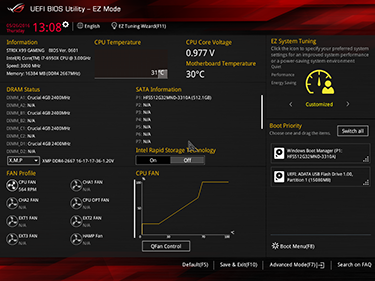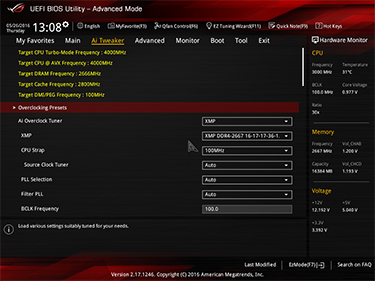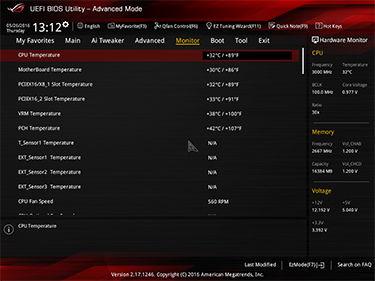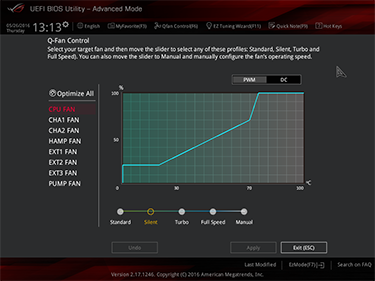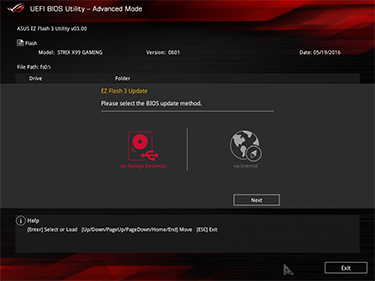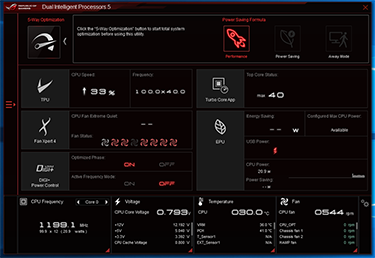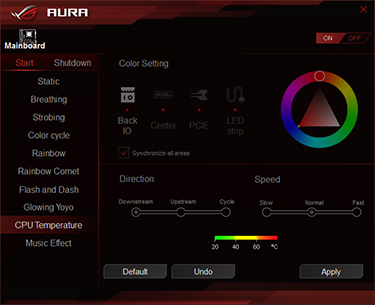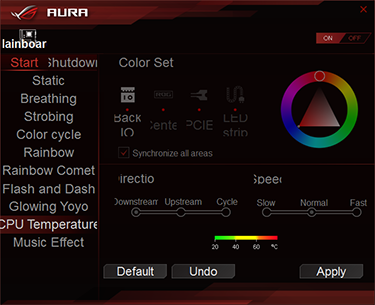Software
With many motherboards offering similar hardware characteristics and near-identical performance, it's often the accompanying software that sets one manufacturer apart from another.
The Asus UEFI BIOS Utility, at version 0601 at the time of writing, will look and feel familiar to anyone who has used an ROG board in recent years. Accessible in one of two modes - EZ or Advanced - the interface is for the most part well laid out and easy to navigate, with mouse support having improved greatly in recent years.
If there's a criticism of the Asus interface, it's that it can feel quite busy with a lot of information on screen at any one time. Enthusiasts may in fact like the amount of data that's available at a glance, yet we'd like to see Asus tidy some of the elements that have built up over time. The 1,024x768 resolution is starting to feel cramped, and perhaps an option to disable the ROG styling to create a cleaner all-black background would help.
Switching to advanced mode via F7 brings up a more traditional set of menus that feel quick and responsive, which isn't always the case in all UEFI implementations. Heading into the Ai Tweaker menu reveals a dizzying array of overclocking options, and there's something kind of fun about setting independent multipliers for all 10 cores.
It's easy to be overwhelmed by the array of options in advanced mode, and though there are tooltips associated to most functions, we'd like to see Asus be more descriptive in helping users understand what certain features will do. If you happen to know what you're doing, you'll appreciate the fact that any sub-menu can be added to a list of favourites for easy access in future visits, and as you'd expect, BIOS profiles are easily saved or restored either onboard or to an external USB drive.
Who makes the best fan control system in the business? That's a tough call, but Asus is certainly a contender. The firm's implementation, dubbed Q-Fan, promises PWM/DC control on every available header, fans can be mapped to different sensors, and there are now configurable spin-up and spin-down delay timers to help prevent unwanted speed fluctuations.
Carrying over some of the features available to Z170, these latest X99 boards also offer BIOS updates via the Internet. This is, frankly, a system that should have been available much sooner, and it's far more convenient than having to download an update and copy it to USB.
A modern firmware is capable of making almost every available option available in a Windows environment, and Asus does exactly that with its AI Suite utility. Entirely optional and free to download, the software provides real-time system status information and a wide range of replicated UEFI options.
Much of the software is geared toward tinkerers and isn't necessary if you prefer to maintain a clean install, though there is one utility you'll need in order to make the most of the ROG Strix X99 Gaming's onboard LEDs. It's a lightweight package called Aura and is required if you want to change the colour of the LEDs or choose a specific pattern.
The software's basic appearance suggests that Asus is still in the early stages of development, and the GUI doesn't scale well at all at a 4K resolution (above, right). Choosing patterns and colours is simple enough, and we particularly like the CPU Temperature profile, which adjusts LED colour based on processor heat. A nifty way of keeping tabs on things, though there doesn't appear to be an option to adjust the temperature settings, and the lighting options are simple - there is, for example, no method of changing colours when you launch a specific app or game.
Aura certainly has room for improvement, yet being advocates of clean installs, we'd like to see Asus circumvent the need for additional software by adding RGB controls to the UEFI BIOS Utility. Such a feature may come, and we're told that future updates will extend synchronisation to other Aura-compatible products.






